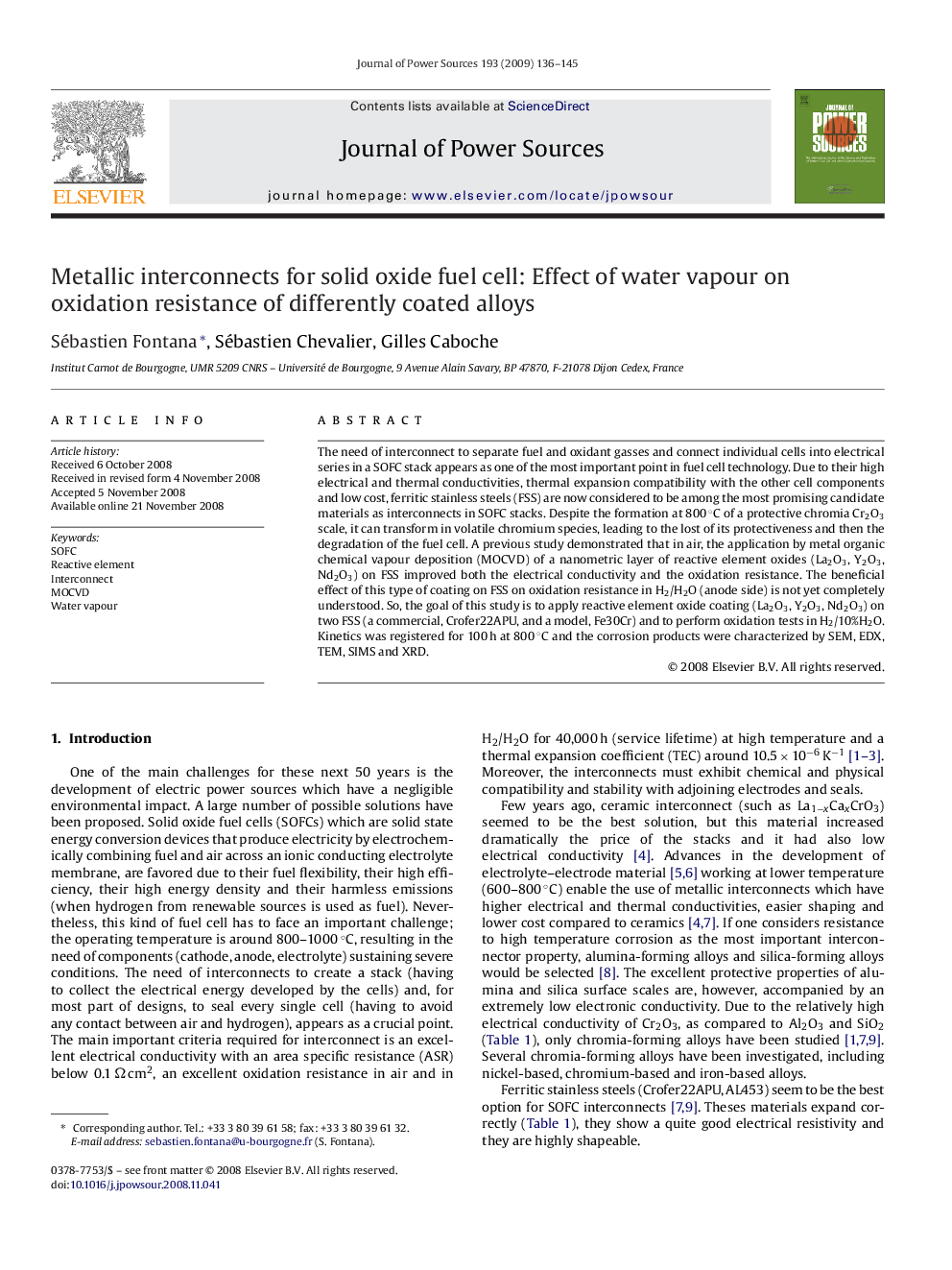| Article ID | Journal | Published Year | Pages | File Type |
|---|---|---|---|---|
| 1289461 | Journal of Power Sources | 2009 | 10 Pages |
The need of interconnect to separate fuel and oxidant gasses and connect individual cells into electrical series in a SOFC stack appears as one of the most important point in fuel cell technology. Due to their high electrical and thermal conductivities, thermal expansion compatibility with the other cell components and low cost, ferritic stainless steels (FSS) are now considered to be among the most promising candidate materials as interconnects in SOFC stacks. Despite the formation at 800 °C of a protective chromia Cr2O3 scale, it can transform in volatile chromium species, leading to the lost of its protectiveness and then the degradation of the fuel cell. A previous study demonstrated that in air, the application by metal organic chemical vapour deposition (MOCVD) of a nanometric layer of reactive element oxides (La2O3, Y2O3, Nd2O3) on FSS improved both the electrical conductivity and the oxidation resistance. The beneficial effect of this type of coating on FSS on oxidation resistance in H2/H2O (anode side) is not yet completely understood. So, the goal of this study is to apply reactive element oxide coating (La2O3, Y2O3, Nd2O3) on two FSS (a commercial, Crofer22APU, and a model, Fe30Cr) and to perform oxidation tests in H2/10%H2O. Kinetics was registered for 100 h at 800 °C and the corrosion products were characterized by SEM, EDX, TEM, SIMS and XRD.
